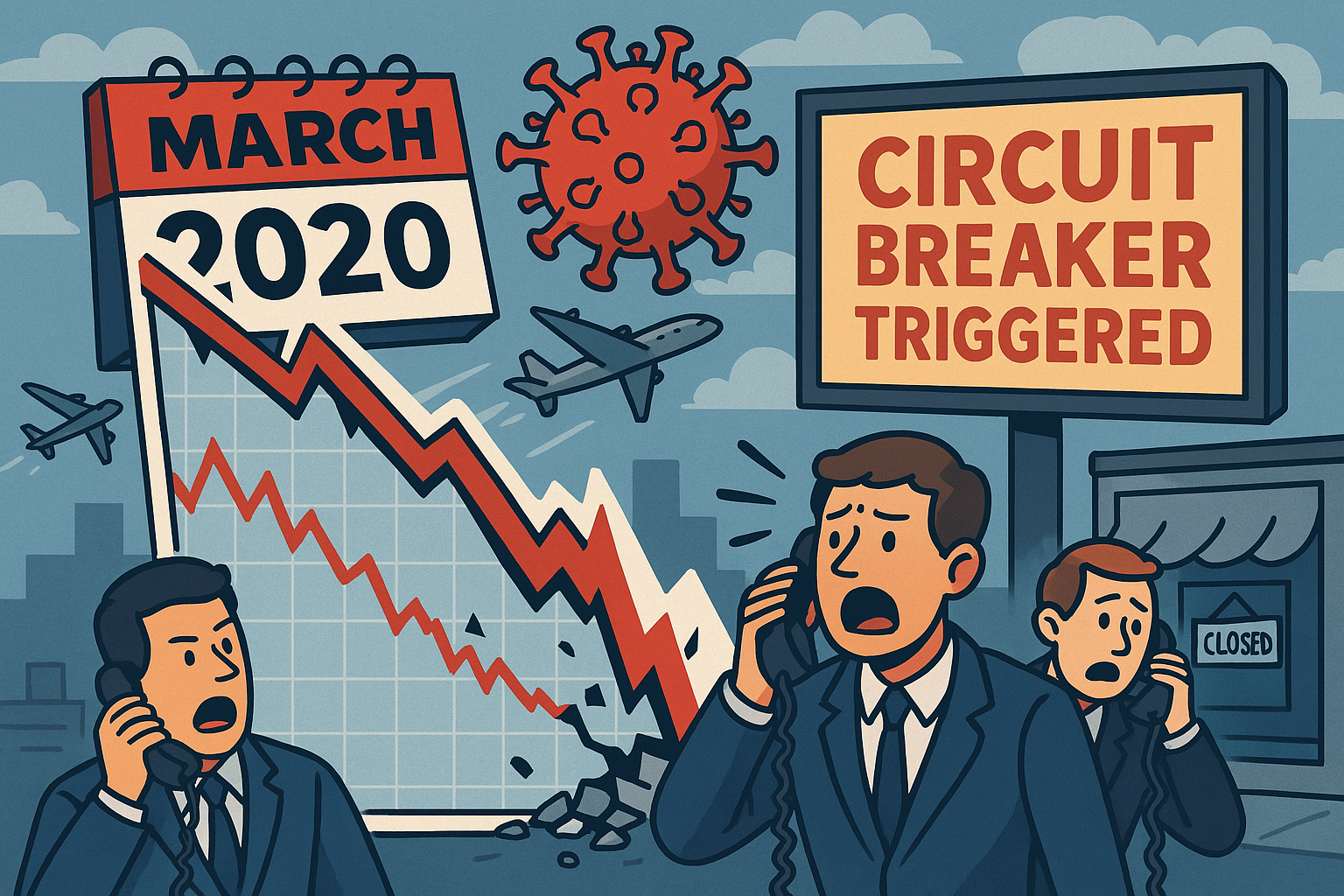
A Crash Measured in Days, Not Months
In February 2020, most people were still going about their lives—working, traveling, and scrolling TikTok.
But by March 23, 2020, the stock market had crashed over 34% in just 33 days.
That’s faster than:
The dot-com bubble
The 2008 crash
The Great Depression
The fastest market crash in modern history.
But why did it happen so quickly?
COVID-19 Wasn’t Just a Health Crisis—It Was an Economic Earthquake
Here’s the domino effect:
- Fear of the virus spread globally
– News of hospitals overwhelmed in China, Italy, and the U.S. - Travel stopped, businesses shut down
– Airlines grounded. Restaurants closed. Global supply chains froze. - People panic-sold their investments
– Everyone rushed to sell stocks and move into cash. - Trading systems couldn’t keep up
– Circuit breakers were triggered 4 times in 2 weeks on the NYSE to stop the panic.
The Numbers That Told the Story
- COVID cases rising exponentially
- Global GDP forecast cut by 10%+
- Oil demand collapsed
- S&P 500 fell 34%
- Entire economies went on pause
It wasn’t just investors panicking.
It was the entire financial system freezing up.
Panic-Selling and Broken Trust
Even solid companies like Apple, Microsoft, and Amazon were seeing massive sell-offs. Why?
Because during panic, investors don’t ask what something is worth.
They just say:
“Sell everything. I want cash. Now.”
Banks, funds, and even countries raced to hoard dollars—causing global liquidity stress.
Circuit Breakers: When the Market Pulls the Emergency Brake
In March 2020, U.S. stock markets hit “circuit breakers” 4 times.
That means prices were falling so fast that trading had to be automatically paused to let people breathe.
It’s like when you slam the brakes because traffic suddenly stops.
- This wasn’t a slow-motion crash. It was a financial whiplash.
- It taught the world how fragile even the biggest markets can be.
- It also showed the power of panic—and the need for calm, long-term thinking.
“Markets don’t crash because of numbers—they crash because of emotions.”
And in March 2020, those emotions were fear, uncertainty, and the feeling that everything was out of control.

